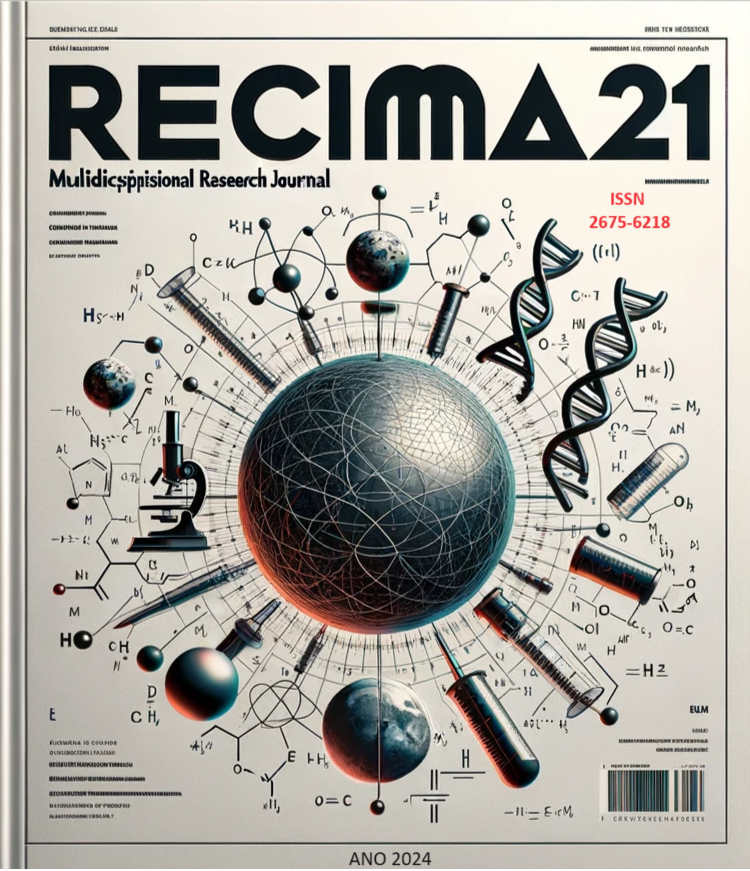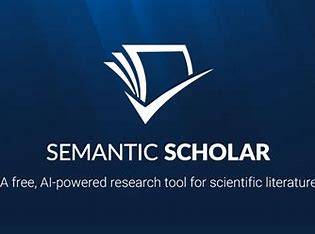TRAUMATISMO CRANIOENCEFÁLICO – DIAGNÓSTICO, TRATAMENTO E FATORES PROGNÓSTICOS: UMA REVISÃO BIBLIOGRÁFICA
DOI:
https://doi.org/10.47820/recima21.v5i3.5029Palavras-chave:
Traumatismos Craniocerebrais. Diagnóstico. Prognóstico. Tratamento.Resumo
O Traumatismo Cranioencefálico (TCE) continua a representar uma das principais questões médicas e de saúde pública em todo o mundo, sendo responsável por um considerável ônus global de morbidade e mortalidade. Objetivo: analisar sobre o diagnóstico, tratamento e fatores prognósticos do TCE. Métodos: Trata-se de uma revisão bibliográfica, utilizando artigos presentes nas seguintes bases de dados: PubMed, Scopus e SciELO Foram incluídos artigos originais e revisões sistemáticas em inglês e português publicadas entre 2010 e 2024, que abordassem sobre fatores de risco e prevenção da pré-eclâmpsia. Após a análise, foram selecionados 24 artigos para a confecção dessa revisão bibliográfica. Resultados e Discussão: A classificação de lesões cerebrais mais utilizada e aceita baseia-se no grau de alerta após o trauma, que é classificado de acordo com a escala de coma de Glasgow. O ambiente pré-hospitalar exerce grande influência no sucesso ou no agravo da condição de saúde do paciente vítima de TCE, tendo sido alvo de amplos estudos para se chegar ao melhor protocolo que minimize ao máximo os riscos de piora e ate óbito. No contexto do TCE, a reabilitação personalizada surge como uma abordagem integral e adaptativa para otimizar a recuperação dos pacientes. Conclusão: A análise dos fatores prognósticos determinantes destaca a importância da avaliação inicial da gravidade da lesão, idade do paciente, tempo até a intervenção, comorbidades, suporte social e adesão ao tratamento.
Downloads
Referências
BAO, Ying-Cun et al. Midnight-noon ebb-flow acupuncture combined with rehabilitation therapy for severe craniocerebral trauma patients with vegetative state: a randomized controlled trial. Zhongguo Zhen jiu = Chinese Acupuncture & Moxibustion, v. 40, n. 3, p. 234-238, 2020.
BLOOM, Ben et al. A systematic review and meta-analysis of return to work after mild traumatic brain injury. Brain Injury, v. 32, n. 13-14, p. 1623-1636, 2018. DOI: https://doi.org/10.1080/02699052.2018.1532111
BŁASZCZYK, Bartłomiej; STUDZIŃSKI, Maciej; ŁADZIŃSKI, Piotr. Coincidence of craniocerebral and craniofacial injuries. Journal of Cranio-Maxillofacial Surgery, v. 47, n. 2, p. 287-292, 2019. DOI: https://doi.org/10.1016/j.jcms.2018.11.024
BUJOK, Jan et al. Open craniocerebral trauma in a patient at work: A case report. Work, v. 72, n. 3, p. 989-995, 2022. DOI: https://doi.org/10.3233/WOR-205213
CAIXETA, Talles Henrique et al. Desenvolvimento de algoritmo de inteligência artificial para detecção de hemorragias intracranianas pós-traumas cranioencefálicos e seus potenciais benefícios no SUS Fácil. 2021.
DE ALMEIDA, Carlos Eduardo Romeu et al. Traumatic brain injury epidemiology in Brazil. World Neurosurgery, v. 87, p. 540-547, 2016. DOI: https://doi.org/10.1016/j.wneu.2015.10.020
DE JONG, Amy U. et al. Sedentary time and physical activity patterns of stroke survivors during the inpatient rehabilitation week. International Journal of Rehabilitation Research, v. 44, n. 2, p. 131-137, 2021. DOI: https://doi.org/10.1097/MRR.0000000000000461
FAZEKAS, Gábor; TAVASZI, Ibolya; TÓTH, András. New opportunities in neuro-rehabilitation: robot mediated therapy in conditions post central nervous system impairments. Ideggyógyászati Szemle, v. 69, n. 5-6, p. 148-154, 2016. DOI: https://doi.org/10.18071/isz.69.0148
GREENBERG et al. Handbook of Neurosurgery. 7th ed. Thieme, 2010. p. 860-861.
HIER, Daniel B. et al. Blood biomarkers for mild traumatic brain injury: a selective review of unresolved issues. Biomarker Research, v. 9, n. 1, p. 1-17, 2021. DOI: https://doi.org/10.1186/s40364-021-00325-5
ISOKUORTTI, Harri et al. Who gets head trauma or recruited in mild traumatic brain injury research? Journal of Neurotrauma, v. 33, n. 2, p. 232-241, 2016. DOI: https://doi.org/10.1089/neu.2015.3888
KARAMANOS, Efstathios et al. Is prehospital endotracheal intubation associated with improved outcomes in isolated severe head injury? A matched cohort analysis. Prehospital and Disaster Medicine, v. 29, n. 1, p. 32-36, 2014. DOI: https://doi.org/10.1017/S1049023X13008947
KOCHOYAN, A. L. et al. The ability to recover cerebral function after an isolated craniocerebral trauma. Sudebno-meditsinskaia Ekspertiza, v. 62, n. 5, p. 58-63, 2019. DOI: https://doi.org/10.17116/sudmed20196205158
LEFEVRE-DOGNIN, Clémence et al. Definition and epidemiology of mild traumatic brain injury. Neurochirurgie, v. 67, n. 3, p. 218-221, 2021. DOI: https://doi.org/10.1016/j.neuchi.2020.02.002
LEVİN, Harvey S.; DİAZ-ARRASTİA, Ramon R. Diagnosis, prognosis, and clinical management of mild traumatic brain injury. The Lancet Neurology, v. 14, n. 5, p. 506-517, 2015. DOI: https://doi.org/10.1016/S1474-4422(15)00002-2
LINGSMA, Hester et al. Prognosis in moderate and severe traumatic brain injury: external validation of the IMPACT models and the role of extracranial injuries. Journal of Trauma and Acute Care Surgery, v. 74, n. 2, p. 639-646, 2013. DOI: https://doi.org/10.1097/TA.0b013e31827d602e
MAGALHÃES, Ana Luísa Gonçalves et al. Traumatic brain injury in Brazil: an epidemiological study and systematic review of the literature. Arquivos de Neuro-Psiquiatria, v. 80, p. 410-423, 2022. DOI: https://doi.org/10.1590/0004-282x-anp-2021-0035
MATHIAS, Emanoel Luiz et al. ABORDAGEM ADEQUADA DO PACIENTE VÍTIMA DE TRAUMATISMO CRANIOENCEFÁLICO (TCE) NAS PRIMEIRAS HORAS APÓS O ACOMETIMENTO. Revista Interdisciplinar Pensamento Científico, v. 4, n. 3, 2018.
NARAYANA, Ponnada A. White matter changes in patients with mild traumatic brain injury: MRI perspective. Concussion, v. 2, n. 2, p. CNC35, 2017. DOI: https://doi.org/10.2217/cnc-2016-0028
OLIVEIRA, Edson et al. Traumatismo crânio-encefálico: abordagem integrada. Acta Médica Portuguesa, v. 25, n. 3, p. 179-192, 2012. DOI: https://doi.org/10.20344/amp.43
SANJUÁN, Alexander Rodríguez et al. Revisión de tema: biomarcadores neuronales y gliales como estrategia de clasificación cuantitativa de la severidad del trauma craneoencefálico. Revista Científica Salud Uninorte, v. 32, n. 2, 2016.
SIMÕES, Marcela Giraldes; DE OLIVEIRA AMORIM, Robson Luis. Traumatismo cranioencefálico e modelos prognósticos: revisão de literatura. Jbnc - Jornal Brasileiro De Neurocirurgia, v. 26, n. 1, p. 57-67, 2015. DOI: https://doi.org/10.22290/jbnc.v26i1.1303
SRIYOOK, Aniwat; GUPTA, Rajiv. Imaging of Head Trauma: Pearls and Pitfalls. Radiologic Clinics, v. 61, n. 3, p. 535-549, 2023. DOI: https://doi.org/10.1016/j.rcl.2023.01.008
VESTERLUND, Ronja et al. “ABC om Lätt traumatisk hjärnskada hos vuxna” [Mild traumatic brain injuries]. Läkartidningen, vol. 120, 23122, 28 Nov. 2023.
Downloads
Publicado
Como Citar
Licença
Copyright (c) 2024 RECIMA21 - Revista Científica Multidisciplinar - ISSN 2675-6218

Este trabalho está licenciado sob uma licença Creative Commons Attribution 4.0 International License.
Os direitos autorais dos artigos/resenhas/TCCs publicados pertecem à revista RECIMA21, e seguem o padrão Creative Commons (CC BY 4.0), permitindo a cópia ou reprodução, desde que cite a fonte e respeite os direitos dos autores e contenham menção aos mesmos nos créditos. Toda e qualquer obra publicada na revista, seu conteúdo é de responsabilidade dos autores, cabendo a RECIMA21 apenas ser o veículo de divulgação, seguindo os padrões nacionais e internacionais de publicação.

 Clique para ver detalhes
Clique para ver detalhes 











